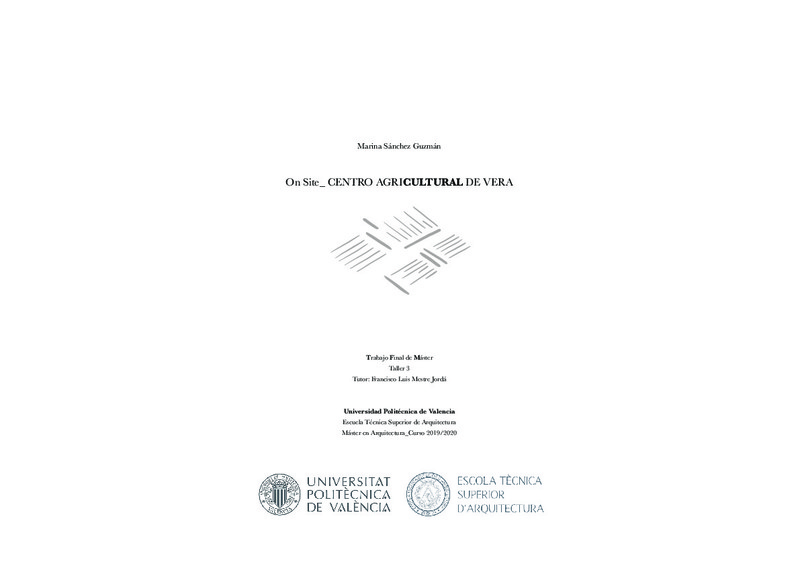|
Resumen:
|
[ES] Los procesos de expansión debidos al crecimiento demográfico y económico de la ciudad de Valencia han supuesto la invasión del espacio agrícola. Como reto, la conciliación del límite periurbano, marcado por la fisura ...[+]
[ES] Los procesos de expansión debidos al crecimiento demográfico y económico de la ciudad de Valencia han supuesto la invasión del espacio agrícola. Como reto, la conciliación del límite periurbano, marcado por la fisura producida por las grandes infraestructuras, con el espacio natural de la huerta norte valenciana, que destaca por su alto valor paisajístico y patrimonial.
La propuesta, considera estrategias sobre el territorio que permiten la conexión huerta-ciudad apoyándose en elementos históricos como el Camino de Vera, Camino de Farinós y Acequia de Vera, con la intención de reprogramar el lugar y reconsiderar el área hortícola como espacio de oportunidad. Se introducen nuevos usos que interactúan con los ya extistentes con el fin de garantizar el relevo generacional mediante la formación de jóvenes agricultores, atraer a la población urbana y dar a conocer la riqueza cultural de la huerta.
El proyecto dialoga con la parcelación original y las preexistencias, reutilizando a su vez una nave agrícola localizada en Partida Calvet, que se convierte en eje principal de un grupo de volúmenes que se asientan adosándose a caminos y acequias, marcando el itinerario del visitante o usuario a través del conjunto.
Con el objetivo de revitalizar el borde y convertirse en lazo de unión en el que conviven lo urbano y lo rural, el programa responde a dos ámbitos: formativo y social, que se dan la mano y materializan como agrocenter, centro cívico y museo de la huerta en el Centro Agricultural de Vera.
[-]
[EN] The expansion processes due to demographic and economic growth of the city of Valencia have meant the invasion of the agricultural extent. As a challenge, the reconciliation of the peri-urban boundary, marked by the ...[+]
[EN] The expansion processes due to demographic and economic growth of the city of Valencia have meant the invasion of the agricultural extent. As a challenge, the reconciliation of the peri-urban boundary, marked by the fissure produced by infrastructures, with the natural space of the northern Valencian orchard, which stands out for its raised landscape and heritage value.
The proposal considers strategies on the territory that allow the orchard-city connection based on historical elements such as Camino de Vera, Camino de Farinós and Acequia de Vera, with the intention of reprogramming the place and reconsidering the horticultural area as a space of opportunity. New uses are
introduced that interact with the already existing ones in order to guarantee the generational change through the training of young farmers, attract the urban population and make known the cultural wealth of the orchard.
The project dialogues with the original subdivision and the pre-existing, in turn reusing an agricultural warehouse located in Partida Calvet, which becomes the main axis of a group of volumes that settle against paths and irrigation ditches marking the itinerary of the visitor or user through the whole.
With the aim of revitalizing the border and becoming a link where the urban and the rural coexist, the program responds to two areas: education and social, which go hand in hand and materialize as an agrocenter, civic center and museum of the orchard at the Vera Agricultural Center.
[-]
|




![PDF file [Pdf]](/themes/UPV/images/pdf.png)



